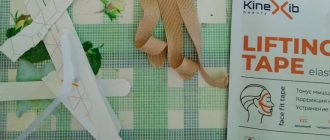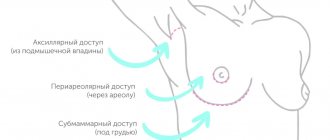Correct your bite or dental defect with invisible aligners Find out what it is
| COMMON DATA | ALINERS | BRACKETS | VENEERS |
| What they look like | transparent mouth guards for temporary wear | temporary sticker on teeth + wire | permanent sticker on teeth |
| Color spectrum | transparent | the most diverse | white or the color of the patient’s teeth |
| Material | polymer | metal/polymer/ceramics | polymer/porcelain/ceramics |
| Transparency | Yes | No | Yes |
| Possibility of metal allergy | No | Yes | No |
| Suitable for children under 16 years old | no But the technology is being developed for children from 7 years old. | Yes | not earlier than the formation of enamel of permanent teeth is completed |
Seriously speaking, it is best to be treated with aligners
Yes, I want to book a free consultation on aligners in my city!
If braces and veneers - we all understand that they are visual and what they are, then aligners
- These are the lightest transparent mouthguards made of solid polymer.
When you put on the aligners, you see your entire dentition (the aligners become invisible).
And this is a plus for aligners
Also, the advantages of aligners include the absence of allergies, just like veneers. Braces cannot boast of this.
By the way, you can find out in 1 minute whether aligners are right for you or whether doctors will forcibly offer only braces: you need to answer only 9 express questions
.
But the main general advantage of braces is that they can be installed in childhood. Although, according to the scientific development department of Star Smile, aligners are now being developed for children from 7 years of age. If this works out, then the undisputed leadership in the overall comparison will go to the aligners.
Why is self-discipline needed?
- If a person experiencing certain inconveniences periodically removes the system out of self-pity, the program developed for him will be disrupted and the treatment may be ineffective.
- A set worn by mistake will also lead to the same result - for example, not the 5th, as scheduled, but the 6th. Each new mouthguard must strongly compress the teeth and move them a little more, and when worn incorrectly, the process is interrupted, which negatively affects its result.
- A duplicate of a lost or broken mouthguard will have to be ordered from an American laboratory, which will take time, and the next stage of correction will be skipped.
Preparation for treatment with braces, veneers and aligners
| Preparing for treatment | ALINERS | BRACKETS | VENEERS |
| Virtual setup: a computer program allows you to create a three-dimensional model of the dental system | Yes | No | Yes |
| Opportunity to discuss the results and progress of treatment with the doctor | Yes | No | Yes |
| Patient participation in treatment | Yes | No | No |
When a patient sees on the computer his future smile, in which all the teeth are aligned, it seems fantastic. But in fact, the 3D virtual setup is a super program from Star Smile, considered one of the best in the world and used by clinics in more than 25 countries
world and
100 cities of Russia
. This program for visualizing the future result of treatment using more than 40 parameters simulates all processes of bite correction and allows you to accurately plan treatment. Exactly with the same great result that the patient will see BEFORE the start of treatment.
Braces do not have this option - all treatment is carried out blindly, and the patient can only live in hope for the future.
And a huge plus in preparing and conducting treatment is the participation of the patient. The aligners are removable and are completely under the control of the person being treated. Therefore, the answer to the question: “What is better - braces or aligners at the initial stage?” — aligners.
Manufacturing and installation of bite correction systems
| Manufacturing and installation | ALINERS | BRACKETS | VENEERS |
| Preparation time | 7 days | 1-2 days standard | from 7 days to 30 |
| Installation time | from 45 minutes to 1 hour both jaws | 3-6 hours | each jaw 6-8 hours |
| The need to take impressions before installation | intra-oral scanning + impressions (optional) | Yes | Yes |
| The need to use anesthesia | No | No | Yes |
Any production of bite correction systems implies the patient’s obligation to make impressions
. Of course, with the help of a doctor. The procedure itself is inconvenient, but it must be done. Aligners are preferred here, since aligners are already digital, computer technologies, and intraoral scanners can be used in their work: the doctor ran such a scanner over the patient’s teeth, and the computer showed their appearance. All of your both jaws on the computer screen are as if they were alive. There is no need to take dental impressions. But, it’s true, not many clinics yet have such advanced technologies. Therefore, the advantage of aligners here is not particularly strong. Therefore, let's also compare the manufacturing and installation times of bite correction systems.
The fastest braces to make. The slowest ones are veneers.
Veneers or braces
? Standard braces are made for you within 1-2 days. The longest in production are veneers. This is understandable. In fact, each dental plate is sharpened for each of your teeth. Therefore, veneers can take up to 30 days. Aligners confidently hold second place - the standard production time is up to 7 days maximum.
The fastest to install are aligners.
Over time of installation
Braces take longer to install than aligners; it can take you up to 6 hours. Aligners are the easiest and fastest way: installation on both jaws will take a maximum of 1 hour. But with veneers you will have to suffer - since each jaw is glued from 6 to 8 hours.
Cost of treatment with aligners
Now you have the opportunity to get a beautiful smile at a cost:
- for the simplest case of correction with aligners from 4,000 rubles
per month - in the most difficult case of teeth straightening with aligners - less than 10,000 rubles
per month
In reality, Star Smile today has the lowest prices
in Russia for aligners compared to all aligner manufacturers! (Invisalign, Orthosnap, 3D Smile)
Find out all prices for aligners
Cost of treatment with aligners:
Star Smile also has the best prices for treatment with aligners in Russia, which covers more than 100 cities of the Russian Federation, since the company’s main goal is to make prices for aligners affordable for the vast majority of patients. You can see this for yourself - look at the prices for aligners.
Information about the brand and its manufacturer
The manufacturer of Invisalign aligners is the international company Align Technology, established in 1997 in the USA. It produces medical products. In addition to mouth guards, it manufactures intraoral scanners and also sells digital OrthoCAD services.
The products of this manufacturer are used by the best dental clinics in the world. The high quality of the product is confirmed by the fact that, since 1999, with their help more than 5 million people have effectively solved problems associated with occlusion.
Invisalign aligners are made from a clear polymer biosilicone. It is a medical grade thermoplastic material. It does not cause allergic reactions, and therefore products made from it are suitable for all people.
Therapeutic effect when correcting a bite - with braces or aligners
Since veneers are not involved in correcting the bite, the comparison is between braces or aligners. Advantages by position are highlighted in red. Leadership lies with the aligners.
| Therapeutic effect | ALINERS | BRACKETS | VENEERS |
| Treatment speed | 30% faster than braces | 30% slower than aligners | no healing effect |
| Therapeutic effect (bite correction) | Yes | Yes | No |
| How the effect is achieved | simultaneous rotation and displacement in the desired direction due to the tight grip of each tooth | sequential rotation, horizontal/vertical shift | stick on crooked teeth |
| Actual teeth straightening | Yes | Yes | No |
| Risk of developing caries | No | Yes | No |
| Whitening effect | only before or after treatment | only before or after treatment | immediately after installation |
| Possibility of changing the appearance of teeth | No | No | Yes |
| Rehabilitation period (after removal) | retainers are a MANDATORY PROCEDURE | retainers - wearing retaining mouth guards at night MANDATORY PROCEDURE | absent |
| Reversibility of treatment | partially reversible | partially reversible | irreversible changes |
| Possibility of remineralizing therapy, strengthening tooth enamel | Yes | No | No |
Removal, damage to teeth, enamel, oral mucosa. Aligners are the best
| Removal, damage to teeth, enamel, oral mucosa | ALINERS | BRACKETS | VENEERS |
| Wisdom teeth removal | Yes | Yes | not necessary |
| Removing part of tooth enamel | No | No | Yes |
| Separation of teeth before treatment | of necessity | of necessity | Yes |
| Risk of damaging existing teeth | No | yes (enamel) | There is |
| Possibility of injury to the oral mucosa | No | Yes | No |
What are Invisalign® attachments?
In some cases, patients have to install special “mounts” (onlays). This:
— Small linings the color of tooth enamel (white filling material), which are located on certain areas of certain teeth;
— Overlays can be quadrangular, square, round, elliptical or triangular. The shape and position of the onlay is determined in the dental clinic for the purpose of application (tooth rotation, intrusion or extrusion).
Intimate disadvantage of all braces
We specifically highlighted this minus as a separate item. Doctors are tactfully silent about this drawback of any brace systems, including lingual braces. But it exists. And it causes a lot of problems for those with braces. This is an injury, but not to the tongue, but to injury by parts of the braces to the mucous membrane of the sexual partner during intimate caresses: causing micro-scratches with possible infection of the wounds due to insufficient hygiene of the braces.
Such statistics are periodically published in the European and American press, where they really and openly talk about it. With veneers and aligners, this problem is absent or minimized: we always try to clean our teeth normally, but with braces it becomes more and more difficult to clean.
How are aligners made - invisible aligners for teeth?
To make aligners, the doctor at the clinic takes impressions of the patient’s jaws and sends them to the manufacturer of the aligners - to us, to the Star Smile company. Using a 3D scanner, a digital model of the teeth is obtained. The trajectory of the teeth is calculated and the required number of aligners is determined - from five to several dozen aligners. It all depends on the severity of the primary pathology.
The video shows how the digital jaw rotates, some lines appear along which the teeth line up. And soon this digital model will begin to come to life in the aligners. Star Smile has developed a unique software simulation of dental biomechanics. You see on the screen how all the lines are aligned, how the patient’s gums precisely move along with the teeth on the screen. This is very important - after all, future aligners should not cause any inconvenience and should fit perfectly on the patient, that is, unnoticed, producing the maximum effect of correcting the bite.
Next stage
— an order for future aligners is sent for 3D printing. Work on the production of aligners is carried out using 3D printers. As a result of digital 3D printing, accurate models of the patient’s teeth are obtained. Models of blanks for aligners are made step by step, that is, already in the dynamics of future treatment; for each stage, a different set of teeth is made.
Next stage
— a vacuum former comes into operation for the production of aligners. Blanks are placed on a special vacuum former mold - prototypes of future aligners. Thanks to super high-tech plastic, these blanks are light, transparent and will be invisible on the teeth.
Next stage
— the aligners acquire their exact geometry and are completely tailored to the anatomical features of the patient’s teeth and gums.
Finish stage
— packaging of manufactured aligners. All aligners are placed in individual sterile bags, listed according to the period of their wearing, and the patient’s name. The aligners have already acquired their own individuality.
All that remains is to put all the individual packages in the Star Smile branded box and the order is sent to your treating orthodontist at your dentistry.
How orthodontists install aligners
And so your aligners came to the doctor. In this video, orthodontist Alexey Trezubov talks in detail about the installation of aligners and shows how the aligners are installed and worn:
Additional doctor visits and procedures
| Additional doctor visits and procedures | ALINERS | BRACKETS | VENEERS |
| Frequency of doctor visits | Once every 4-6 weeks | every 2 weeks | after fixation once 6 months |
| Probability of root canal treatment | low | low | high |
You should most rarely visit a doctor after installing veneers, most often - every two weeks - when installing braces. Aligners are a relatively comfortable visit once every month to a month and a half.
Duration of therapy
The time required to obtain the final result depends on the complexity of the clinical case. On average, according to the official Align Technology website, it takes about 1 year, which corresponds to 24 sets of aligners.
The doctor can announce the approximate duration of therapy in a specific situation only after diagnosis and development of an algorithm for the treatment process.
Food and drink intake, habits. What is better - braces or aligners?
| Eating and drinking habits | ALINERS | BRACKETS | VENEERS |
| Restrictions on food intake (diet) | Hardly ever | Yes | Yes |
| Can be removed while eating | Yes | No | No |
| Eating solid foods (nuts, crackers, etc.) | yes (without aligners, need to be removed) | No | Yes |
| Getting food between teeth when eating | No | Yes very many | No |
| Residual odor from the mouth after eating | No | Yes | No |
| Eating food with dyes | No | Yes | No |
| Alcohol consumption (over 21 years of age) | no pattern | no pattern | no pattern |
| Smoking (contraindicated when wearing or not) | acceptable | acceptable | acceptable |
Here is perhaps the most interesting information for patients. Since we eat every day and several times. Additional structures in the form of braces, aligners or veneers should, in theory, make eating problematic. After all, they can break and come off. Is it so?
Aligners have no restrictions on food intake. Braces have a lot of
No matter how strange this statement may seem, aligners are significantly superior to braces and veneers for one, but cool, reason - they can simply be removed when eating. You will not have this option if you wear braces or veneers. Therefore, if you are a food lover and cannot deny yourself the desire to chew nuts, crackers and other hard treats, make the right choice. And even if you eat in the aligners, the risk of damaging the aligner itself, although present, is extremely small, since the aligners are a fairly strong mouthguard made of special plastic.
Orthodontists recommend wearing aligners 20-22 hours a day. This means you have 2-4 hours to eat and drink. This is more than enough to eat without problems.
Braces are the leading cause of food getting stuck. Aligners are the best!
The presence of rigid bridge-like structures on the teeth in the form of wire between the braces has given the undisputed leadership in the area of food stuck to braces. Everything you eat for breakfast, lunch and dinner gets stuck in the space between the tooth and the wire. And the design of the braces themselves, which are attached to the teeth, is such that food also clings to them and remains. And, if you don’t clean out food debris, it may stay in the mouth longer than usual - at least an odor appears. And the maximum is deposits on the teeth, which can lead to the destruction of its enamel. Deposits on the teeth, plaque around braces and in places where food often gets stuck - this is not the case with aligners for one simple reason: you can remove the aligners and brush your teeth normally.
Subsequent brushing of teeth and oral hygiene (more on them below) is a complete headache for the patient. Every day, several times and much more carefully than usual. Are you ready for such a waste of time? - then this should not prevent you from installing braces.
Veneers and aligners “do not suffer from the problem” of additional teeth cleaning, since food CANNOT get stuck in the aligners, and when eating food, veneers behave just like regular teeth with appropriate subsequent care for them.
Teeth brushing and oral hygiene: braces are underdogs. Veneers or aligners?
| Brushing teeth and oral hygiene | ALINERS | BRACKETS | VENEERS |
| Difficulty with hygiene | No | Yes | No |
| The need to brush your teeth after every meal | no (rinse) | Yes | no (rinse) |
| Brushing teeth as usual without additional equipment | Yes | no irrigators, brushes, mono-beam brush | Yes |
| Possibility of using dental floss for cleaning | yes (optional) | yes (required) | yes (optional) |
| Possibility to use toothpicks | yes (optional) | yes (required) | No |
| Using special toothbrushes | No | Yes | No |
| The need to update your toothbrushes | Standard | on average once every 3 weeks (high wear) | Standard |
What do we see in the table?
As we can see from the comparison table, the teeth that are the most difficult to care for are
- when wearing braces. There’s so much that’s missing here, look how many worries arise:
- Do you need to brush your teeth and between braces after every meal? - Necessary
- Will regular brushes work? - No, we need special ones and they are used up quickly
- Is your teeth brushing routine? - No, you need jewelry and acrobatic precision to clean all the nooks and crannies of the braces supports and the contacts of the supports with wire, rubber bands, etc. quiet horror…
- dental floss? - OF SURE, the leftover food will be impatiently waiting, absurdly stuck in the braces and tooth crevices when you pull them out with a creak.
- what if you don't clean it well? — The smell of decomposing food will not take long to arrive. Brrrrrr
Second place in terms of cleaning difficulties
- veneers. In principle, there are no particular problems cleaning veneers. These are actually second teeth, tightly adjacent to the first, but ground. Here you need to think more about the quality of food, constantly check: what you eat is not particularly solid. And - constantly shake - what if it falls off and exposes the terrible skeleton/stump of the former tooth.
And there is also a huge problem with veneers: you need to know which clinic is the right place to install them. Well, patients suffer a LOT of complications due to negligence when attaching veneers. Look how it happens, don't watch it for the faint of heart!
Oh, well, we forgot the main thing - we’re talking about veneers here, but veneers are not a method of correcting a bite. This is an invasive procedure that changes the structure of the teeth. After veneers, teeth cannot be restored and you will have to wear veneers for the rest of your life.
In case of braces and aligners
- there is no such thing, these are removable orthodontic structures that are put on for a certain period of time (the braces are rigidly attached, the aligners can be removed freely), and then - after treatment there is no need to wear them and all the patient’s teeth are in order, they are all his own, not turned.
First place for cleaning comfort - aligners
Everything is absolutely natural:
- took the aligners off my teeth, ate, brushed my teeth
- rinsed the aligners
- I put the aligners back on my teeth. ALL
During meals, the aligners can be stored in a personal box - box
Well, VERY convenient. See for yourself:
Wait, the girl here hasn’t packed the aligner in the box yet. Here you can better see how convenient it is:
Patient comfort: braces or aligners? The answer is obvious
| Patient comfort | ALINERS | BRACKETS | VENEERS |
| The patient sees the final result even before treatment begins | Yes | No | Yes |
| Must be worn without taking off | No | Yes | Yes |
| Psychological comfort | Yes | No | Not really |
| Possibility of forming complexes and isolation in young patients | No | Yes | No |
| Aesthetic appearance (visual comfort) | Yes | No | Yes |
| Feeling of discomfort in the mouth | No | Yes | No |
| Possibility of intense pain at the beginning of correction | No | Yes | Yes |
| Visibility in communication | No | Yes | No |
| Impaired diction | Hardly ever | Yes | No |
| Protection against dental injuries | Yes | No | No |
| Ease of installation | Yes | No | No |
| Comfortable to wear | Yes | No | Yes |
| Possibility of self-replacement | Yes | No | No |
| Possibility of peeling off | No | Yes | Yes |
| Refusal of the usual way of life, smiles and communication | No | Yes | No |
Comfort #1 – The patient sees the final result before treatment begins
What does it mean? Treatment with braces (with the exception of lingual braces) is carried out by the orthodontist almost “blindly”, that is, it is almost impossible to predict the exact result of correcting the bite with braces.
In the case of veneers, the smile is designed while working with the patient, the veneers are tried on the teeth, and the patient accurately sees his future smile in the process of teeth transformation.
Before starting treatment with aligners, a prognosis is made for the patient - a virtual 3D setup. What is a virtual 3D setup? This is the magic inherent in aligners. See for yourself:
Virtual 3D setup - see your future beautiful smile
Treatment with aligners begins with diagnosis and drawing up a virtual setup for EACH patient. Using special software, the orthodontist obtains a three-dimensional model of the patient’s dental system. This allows you to calculate the trajectory of movement of all teeth, the timing of treatment, and the required number of sets of aligners for the entire course of treatment.
In this way, the final result will be visualized - the patient will be able to evaluate the aesthetics of the smile after his treatment without even starting it. Patients really like this approach - they can see their future smile, their straight teeth. The forecast of a 3D setup when straightening teeth with aligners comes true in almost 100% of cases.
What do activators for aligners look like?
When fixed to the teeth, aligners transmit their effect on tooth movements through activators - special points that the doctor places on parts of the teeth. They look schematically like this:
When wearing aligners, the activators are not visible. And after treatment, they are removed by the doctor, so that not a trace remains of them.
Comfort #2 - Can orthodontic appliances be removed?
Veneers
- are set forever. That is, until the subsequent possible peeling, when the doctor glues them back and the patient walks with them all his life.
Braces
- non-removable orthodontic equipment, the wearing of which the patient must accept for the entire period of occlusion correction.
Aligners
- you can take it off when the patient needs it: when eating, brushing teeth, you can even go to a restaurant or cafe and if you want, you can also take it off. And the rest of the time they must be worn for the therapeutic effect to occur. Really cool!
Comfort #3 – Psychological comfort
Wearing veneers does not cause psychological discomfort - after all, a smile with veneers looks great. Discomfort arises only when the veneer comes off and the skeleton of the tooth becomes visible (and it is ugly, believe me) on which, in fact, the veneer rests. And you need to run to the orthodontist as soon as possible so that he can return your beauty to its place.
Irina, who went through these methods of bite correction, talks in the video about psychological comfort with aligners and discomfort when wearing braces. Irina wore braces as a teenager, but the treatment was not completed. She was forced to wear braces, and it was difficult for her both psychologically and physically:
Types of correction programs
The essence of the action of aligners is to move teeth in the process of synchronized directed mechanical action. At each stage of therapy, certain dental elements move according to a pre-developed plan.
There are 3 adjustment programs. They are differentiated depending on the complexity of the existing defect and, accordingly, on the number of aligners:
- SuperLite – up to 7 pieces;
- Lite – up to 14;
- Full – from 10 to 40 pieces.
The choice of program is made by the doctor, in accordance with the patient’s initial data.
Seriously speaking, it is best to be treated with aligners
Why?
Yes, because they have a huge number of advantages over braces. There are only a few difficult dental pathologies that aligners cannot handle. But all other problems of crooked teeth are perfectly corrected by aligners! Star Smile is represented by orthodontists in more than 70 (!) cities of Russia. And we guarantee you the most comfortable prices for treatment with aligners! To make sure of this, leave a request for a FREE consultation with an orthodontist in your city. Do you want to visit an orthodontist completely free?
Each set of aligners provides only a small amount of teeth straightening
The alignment that a single set of aligners can achieve is quite small. Typically, each set is designed to align a specific group of teeth by approximately 0.25 mm. This is about one hundredth of an inch.
This may seem like very little. But after wearing 10, 20, perhaps even 30 or more sets in succession, the total amount of correction shift can be quite significant.
It’s enough to turn your old grimace into a dazzling smile.










